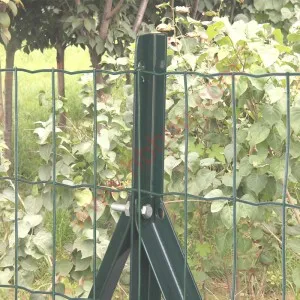Joining Round Timber Posts Techniques and Considerations
Joining round timber posts is an essential skill in various construction and woodworking projects. Whether you're building a fence, a pergola, or a garden structure, understanding how to effectively connect these posts ensures stability and durability. Round timber, while aesthetically pleasing and often more economical than square or rectangular timber, comes with its own set of challenges. This article will explore some techniques for joining round timber posts, as well as considerations to keep in mind during the process.
Choosing the Right Method
There are several methods to join round timber posts, each with its own advantages depending on the specific application. Here are some popular techniques
1. Lashing This traditional method involves using strong ropes or twine to bind the posts securely together. Lashing is an effective technique for temporary structures or outdoor shelters, as it allows for flexibility and adjustment. However, it may not provide the strength needed for permanent installations.
2. Brackets and Connectors Metal brackets and connectors can provide a strong, stable joint when joining round timber posts. These come in various designs, including angled brackets, T-joints, and more. The use of brackets can simplify the joining process and enhance the overall load-bearing capacity of the structure.
3. Mortise and Tenon Joints For a more traditional and aesthetic method, consider using mortise and tenon joints. This technique involves carving a hole (mortise) into one post and fitting a projecting piece (tenon) from another post into it. While this method requires more skill and tools, it can result in a sturdy and visually appealing connection.
4. Screwing and Bolting Another straightforward approach is to use screws or bolts to fasten the posts together. For round timber, it's essential to pre-drill the holes to prevent splitting. This method can work particularly well when combining round timber with other materials or ensuring a strong hold in heavier structures.
Considerations
joining round timber posts

While joining round timber posts, several factors should be taken into account to ensure a successful project
1. Wood Type Different types of timber have varying resistance to moisture, insects, and decay. For outdoor projects, consider using treated wood or naturally durable species like cedar or redwood to prolong the lifespan of the structure.
2. Post Spacing and Alignment Ensure that your posts are spaced appropriately for the intended use. Pay attention to aligning the posts properly to maintain a straight and level structure. Using a string line or laser level can help achieve this accuracy.
3. Weather Conditions If you are working outdoors, be mindful of weather conditions. Installing posts during wet conditions can lead to ground settling, while excessively hot weather might cause materials to expand or warp.
4. Structural Integrity Consider the loads and stresses that will be applied to the joined posts. For larger structures, it may be necessary to consult with a structural engineer or experienced builder to ensure the joints will withstand expected forces.
5. Finishing Touches After joining the posts, consider applying protective finishes like stains, paints, or sealants to preserve the wood and enhance its appearance.
Conclusion
Joining round timber posts is a valuable skill that can enhance your woodworking projects. By choosing the right joining method and taking necessary precautions, you can create sturdy and attractive structures that stand the test of time. Whether you're embarking on a DIY fence or a custom garden feature, careful planning and execution will lead to successful results.
















